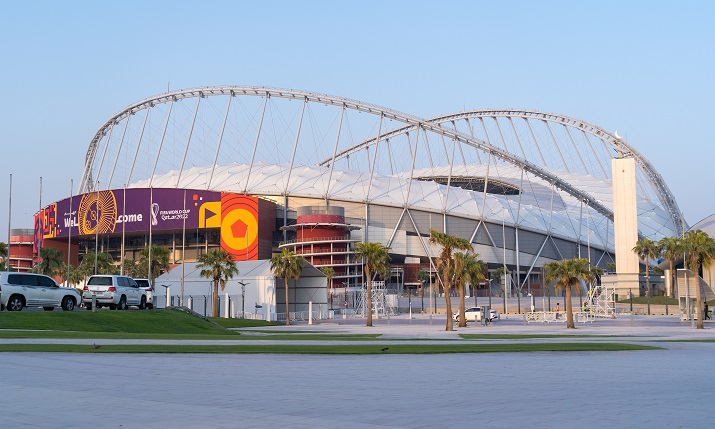Amazon CloudFront delivers FIFA World Cup streams for 19 broadcasters globally

Amazon CloudFront was utilised to deliver streams for the 2022 FIFA World Cup on behalf of more than 19 major broadcasters globally. In many cases, those involved built adaptive bitrate streaming architectures with CloudFront used in concert with AWS Elemental Media Services for cloud-based stream origination.
Planning for the tournament began around 18 months before the first ball was kicked due to considerations such as the non-linear nature of internet traffic growth during a major sporting event, where a significant proportion of viewers access the event using their home broadband or mobile network service. How a stream is delivered to an end-user device, such as a smart TV, games console, smartphone or tablet, also needed to be factored in.
This proactive preparation allowed AWS’ network planning teams to work closely with its ISP partners to ensure that customer forecasts for event traffic were incorporated into the mutual network capacity buildout planning. A number of customers also benefited from AWS’ Media Event Management service, which provides best-practice architectural review and documentation in advance of the event, as well as war-room support during the action and a post-event retrospective.
During the span of the tournament, Amazon CloudFront delivered streams to more than 49 million unique client IP addresses, supporting major broadcast/streaming operators across Western Europe, North America, Latin America, ASEAN and Japan. Throughout the tournament, CloudFront delivered more than 150 petabytes of streaming media content across all of these customers, peaking at just under 23 terabits-per-second across these customer distributions during the final game of the tournament.
More than 100 unique user-agent strings were in evidence across all streams served, highlighting the heavily fragmented nature of the playback device landscape. Using a representative sample of CloudFront log data from Western Europe, AWS found that more than 28% of requests were associated with a mobile device user agent, making smartphones and tablets the predominant destination for streams served by CloudFront during the tournament in this part of the world. Games console-associated user agents had the lowest share of the total, but this still totalled more than 18%. The implication is that all of these playback platforms offer viewers different options that they like – and that playback experience across all of these device types requires attention during large-scale events.
Rory McVicar, principal go-to-market specialist, edge services, Amazon Web Services, said: “The FIFA World Cup 2022 was, in many ways, an extraordinary tournament, and one that will live long in the memory of many. What’s clear is that the continued rise of streaming is likely to accelerate as broadcasters take advantage of the increased prevalence of connected TV to build differentiated experiences for their customers.”
“Mobile streaming clearly isn’t going away and offers potential for second-screen or augmented viewer experiences in addition to its viewer portability benefits,” added McVicar. “The richness of experience offered to the viewer, and the opportunity for innovation afforded to the broadcaster, means that internet-delivery will become more and more the norm in future tournaments, eventually replacing linear broadcast.”
AWS also found that viewing preferences varied in different parts of the world. In Japan, for example, smart TV is the dominant platform, with 4K-enabled smart TVs alone accounting for almost 10% of all requests. In some ways, this offers an indication of where streaming is headed. For all of the benefits of being able to watch events unfold live wherever a viewer may be, fans still value a big screen experience.
The impact the timing of matches can have on the networks through which viewers access their streams also became clear during the tournament. For example, the group stage matches took place daily, starting at 11:00 Central European Time. In Western Europe, at least two matches per day took place during working hours over a two-week period. During this period, a larger proportion of requests from non-domestic ISP networks, such as academic networks, was noted.
This was also the first World Cup to occur during the seasonal Black Friday global shopping event and the date coincided with a high-profile group stage match between England and the USA. On the day of these overlapping events, CloudFront successfully delivered a record number of requests-per-second across the network, with both streamers and shoppers enjoying a great quality of experience.
“In all of this, a new form of television is emerging – one that offers fans and broadcasters alike the ability to reinvent the experience of watching live sports,” McVicar concluded. “Along with many of our customers, we are already well into the planning stages for the next set of forthcoming major events.”
